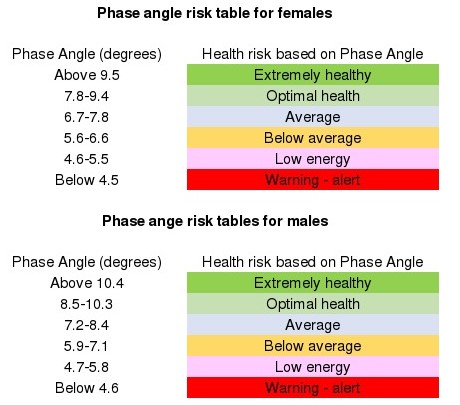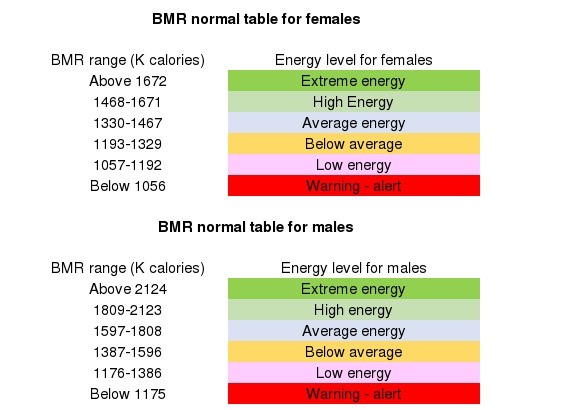B.I.A. Testing
Why is Body Composition Important?
Scale weight is not an indicator of an individual's body fat or health. Body composition is the amount of lean tissue compared to fat. Body composition data can form the basis for a wide variety of therapeutic health and fitness prescriptions. In clinical applications, body composition analysis along with non-pharmacologic nutrition and exercise prescriptions provide the foundation upon which further treatment is based. Only body composition analysis can determine how much muscle and fat are lost or gained as the result of any nutrition, exercise, or pharmaceutical prescription.
How is Abnormal Body Composition Managed?
When there is an imbalance between calorie intake and calorie burn, we change our body composition. The quantitative management of abnormal body composition, i.e. obesity, anorexia, disease, etc. must be associated with daily calorie intake and expenditure. The successful application of body composition analysis must have a three compartment assessment. These compartments are:
- FAT - Storage of potential energy or body fat or calorie storage.
- BCM - (Body Cell Mass) the burning of fat and nutrients then converting it to work or kinetic energy or calorie expenditure.
- ECM - (Extracellular Mass) the transportation of nutrients, waste and fluids.
The body composition analysis equipment and software used at The Wellness Institute will allow your Naturopathic Doctor to manage the information and data obtained to create and evaluate custom prescriptions for change.
What are the Long-Term Benefits of a Good Body Composition Prescription?
The ability to (1) analyze body composition data interactively, (2) create prescriptions for change and (3) visualize the effectiveness of those prescriptions with projected and historical graphs helps increase motivation for positive change.
The ultimate outcome is improved health and increased longevity!
The Three Compartments of the Human Body:
The functional compartment, Body Cell Mass
Body Cell Mass is the functional mass of the body where work is done. All oxygen consumption, carbon dioxide production, glucose oxidation, protein synthesis and other metabolic work takes place within the body cell mass. The body cell mass is, in effect, the total mass of all the cellular elements in the body, and therefore, represents the metabolically active component of the body. In the normally nourished individual, muscle tissue accounts for approximately 60% of the body cell mass, organ tissue for 20% of body cell mass, with the remaining 20% made up of red cells and tissue cells. It also contains the majority of the body's potassium, (98 - 99%).
The support compartment, Extracellular Cell Mass
Extracellular Cell Mass is the support mass of the body and is metabolically inactive, consumes no oxygen, produces no carbon dioxide and performs no work. The extracellular mass consists of extracellular fluids and solids, such as bone and cartilage, with its primary function that of support and transport. ECM is located outside of the cellular compartment or outside of the body cell mass. Lean body mass is the sum of body cell mass and extracellular mass.
The energy storage compartment, Fat Mass
Fat Mass: Body fat is the storage of potential energy that you consume when doing work or exercise. Fat has 3500 calories per pound of body fat. It is the total lipid mass (triglycerides) with a density of .9 g/ml. Fat is equal to actual weight minus fat free mass

What is Phase Angle?
Phase angle is based on total body resistance and reactance and is independent of height, weight and body fat. Lower phase angles appear to be consistent with either cell death or a breakdown of the cell membrane. Higher phase angles appear to be consistent large quantities of intact cell membranes and body cell mass. All living substances have a phase angle, in fresh uncooked vegetables phase angle can exceed 45 degrees. In cooked vegetables phase angle is zero because they are dead.
Why is Phase Angle Important?
Phase Angle is a predictor of outcome and indicates the course of disease or increases as the result of optimal health based on good nutrition and consistent exercise. As we get older our phase angle will decrease and will be approximately 4 or less when we die. Fit adolescents may have a phase angle greater than 10. This effect is a result of cell integrity due to age. Low phase angles are consistent with:
- Malnutrition
- HIV/AIDS infection
- Cancer (most types)
- Abusive life style
- Chronic Alcoholism
- Old Age (80 - 100 years)
Good fitness and life style is the key to maintaining a healthy phase angle.
Phase Angle Conclusion
Phase angle is a good indicator of disease progression although it is not used to diagnose a specific disease. It may be thought of as a thermometer with a broad range of normal. It may also be used to monitor the practice of good health, which would include healthy diets, the use nutritional supplements and exercise.
References:
M. Ott, H. Fisher, H. Polat, E. B. Helm, M. Frenz, W. F. Caspary B. Lembcke "Bioelectrical Impedance Analysis as a Predictor of Survival in Patient with HIV Infection" J. of Acquired Immune Deficiency Syndromes and Human Retrovirology 9:20-25 1995
R. Liedtke "Principles of Bioelectrical Impedance"

What is BMI?
BMI stands for "Body Mass Index," a ratio between weight and height. It is a mathematical formula that correlates somewhat with body fat.
Why is BMI Important?
If your BMI is high, you may have an increased risk of developing certain diseases, including:
- Hypertension
- Cardiovascular Disease
- Dyslipidemia
- Adult-Onset Diabetes (Type II)
- Sleep Apnea
- Osteoarthritis
- Female Infertility
Prevention of further weight gain is important and weight reduction is desirable.
Exceptions to BMI
BMI is a better predictor of disease risk than body weight alone. However, there are certain people who should not use BMI as the basis for estimating body fat content: competitive athletes and body builders, whose BMI is high due to a relatively larger amount of muscle, and women who are pregnant or lactating. Nor is it intended for use in growing children or in frail and sedentary elderly individuals.

What is BMR
Energy is the most fundamental need of biological systems. Without it, the basic biological processes of life cannot occur. Survival depends on consistently finding the right fuel in the appropriate quantity to sustain the biochemical reactions of energy metabolism. The body extracts and uses energy through the process of metabolism. Metabolism occurs in two distinct and interdependent phases: 1.) catabolism, in which the body breaks down food into its component parts and harvests the energy stored in its atomic bonds, and 2.) anabolism, in which those component parts and energy are used to build new tissues and conduct basic life functions. Basal Metabolic Rate (BMR) is the amount of energy your body requires every day to perform its most basic function including:
- Breathing
- Digesting
- Heart beating
- Muscle activity
- Transportation of fluids and tissue
- Circulation of blood
This is the amount of energy you would require if you laid in bed all day without ever moving a single muscle. Since most of us do a bit more than that, a daily activity level must also be factored in. This ranges from everyday activities to working out strenuously.
Why is BMR important
BMR is the only a way to estimate how fast you burn calories. The slower your metabolism, the more weight you will retain. If you burn your daily calorie intake, you will maintain your current weight. Burning more than your daily intake, causes weight loss. There are many factors that vary your metabolism. However, exercise and daily activity level are key to increasing your BMR. There can be major nutritional consequences to the decline of the BMR in advanced age. Decreased caloric requirements may lead to decreased food intake. Sufficiently low caloric intake can lead to deficient intake of essential nutrients.
Conclusion to basal metabolic rate
BMR varies between the sexes. Lean body mass is a major determinant, and women tend to have less lean muscle mass. As a result, their BMR is lower than that of otherwise comparable males. BMR is at peak during infancy, then it declines rapidly through childhood and adolescence. It continues to fall slowly with increasing age and declines further with old age largely due to a loss of muscle mass. However, this is not inevitable, because weight-bearing (resistance) exercise will prevent or reverse muscle loss among the elderly.





